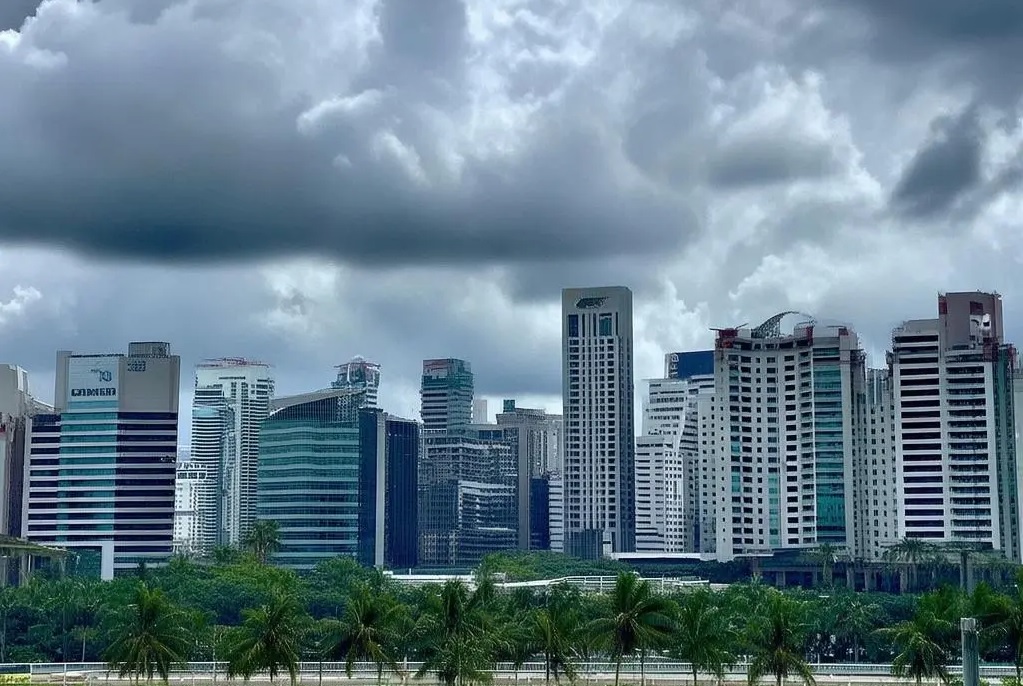1. Weather in Singapore: Understanding Singapore’s Unique Climate
Singapore’s tropical rainforest climate features consistent heat and high humidity. With no distinct seasons, weather changes are driven by the Northeast Monsoon (December to March) and Southwest Monsoon (June to September), separated by inter-monsoonal periods in April and October.
2. Daily Weather Patterns and What to Expect
The weather typically follows a predictable cycle:
- Morning: Clear or light showers.
- Afternoon: Hot and humid, often followed by thunderstorms.
- Night: Cooler temperatures with occasional rain.
3. Essential Tools for Staying Informed
Keep track of the weather with:
- myENV App: Offers detailed forecasts and live updates.
- WeatherInSG: Monitor real-time weather forecast and rainfall to plan your day.
4. Interesting Weather Facts About Singapore
- Record Rainfall: The highest recorded rainfall in Singapore was 512.4mm in a single day on December 2, 1978. This intense downpour caused widespread flooding across the island.
- Lightning Capital: Singapore experiences an average of 168 lightning days per year, one of the highest in the world. Lightning storms are particularly common during the monsoon seasons.
- Temperature Extremes: The hottest day on record was 37°C (98.6°F) in May 2023, while the lowest recorded temperature was 19.4°C (66.9°F) in 1934.
5. Unique Features Shaped by Weather
- Rain Shelters and Covered Walkways: Singapore’s urban planning incorporates extensive sheltered walkways and linkways, allowing people to move around comfortably even during heavy rain. Many bus stops and public spaces also have rain covers.
- Vertical Gardens and Green Roofs: The humid climate supports lush greenery on buildings, such as the iconic Parkroyal Collection Pickering and Marina One.
- Unique Flora and Fauna: The constant heat and moisture create an environment for tropical plants like orchids, mangroves, and pitcher plants. Singapore’s Botanic Gardens, a UNESCO World Heritage site, showcases many rare species.
- Rain Trees: The massive Rain Trees (Samanea saman), often seen along major roads, thrive in Singapore’s climate and are named for their ability to “weep” water from their leaves after rainfall.
6. Weather’s Impact on Daily Life and Events
Weather affects outdoor festivals and events, such as the Singapore Grand Prix, which continues rain or shine. Locals adapt by carrying umbrellas and dressing in lightweight clothing.
Weather’s Impact on Daily Life and Events
Singapore’s weather influences many aspects of daily life:
- Outdoor Activities: Early mornings and evenings are ideal for visits to places like Gardens by the Bay or East Coast Park.
- Transport: Heavy rain can slow down public transport and cause delays. Always have a backup plan.
- Festivals: Major events like the Singapore Grand Prix often coincide with wetter months but proceed regardless of the weather.
Dressing for Singapore’s Weather
The right clothing can make a huge difference in comfort:
- Light, Breathable Fabrics: Cotton and linen help keep you cool.
- Rain Gear: Compact umbrellas and ponchos are essential.
- Sun Protection: Hats, sunglasses, and SPF 50+ sunscreen are must-haves.
How Weather Affects Health and Well-being
- Dehydration: Always carry a water bottle and drink frequently.
- Heat Exhaustion: Take breaks in air-conditioned spaces when outdoors for long periods.
- Air Quality: During the haze season (typically between July and October), monitor PSI levels and wear N95 masks if necessary.
Practical Tips for Tourists and Expats
- Packing Essentials: Lightweight clothing, a rain jacket, and comfortable footwear.
- Travel Insurance: Consider policies that cover weather-related delays.
- Local Etiquette: It’s common to reschedule plans due to rain, so flexibility is key.
Preparing for Extreme Weather
- Flood-Prone Areas: Pay attention to low-lying areas like Orchard Road during heavy rain.
- Lightning Safety: Singapore experiences frequent lightning storms; seek shelter indoors during storms.
- Emergency Resources: Keep the NEA hotline and weather alert systems handy.
7. The Science Behind Singapore’s Weather
Singapore’s equatorial location contributes to its hot and wet climate. Climate change has led to more unpredictable weather patterns, including higher temperatures and more intense storms. The government uses advanced technology to monitor and predict weather changes, ensuring public safety and preparedness.
8. WeatherInSG by Specials In Singapore
Understanding Singapore’s unique weather patterns and natural features is key to enjoying everything the city has to offer. Whether you’re exploring lush gardens, attending outdoor events, or navigating daily life, staying informed about real-time weather updates is essential for planning ahead and avoiding disruptions.
That’s why SpecialInSG provides accurate, up-to-the-minute weather information, including 24-hour forecasts, 2-hour outlooks, and real-time rain area maps. Our goal is to help both residents and visitors make the most of their time in Singapore, rain or shine.
